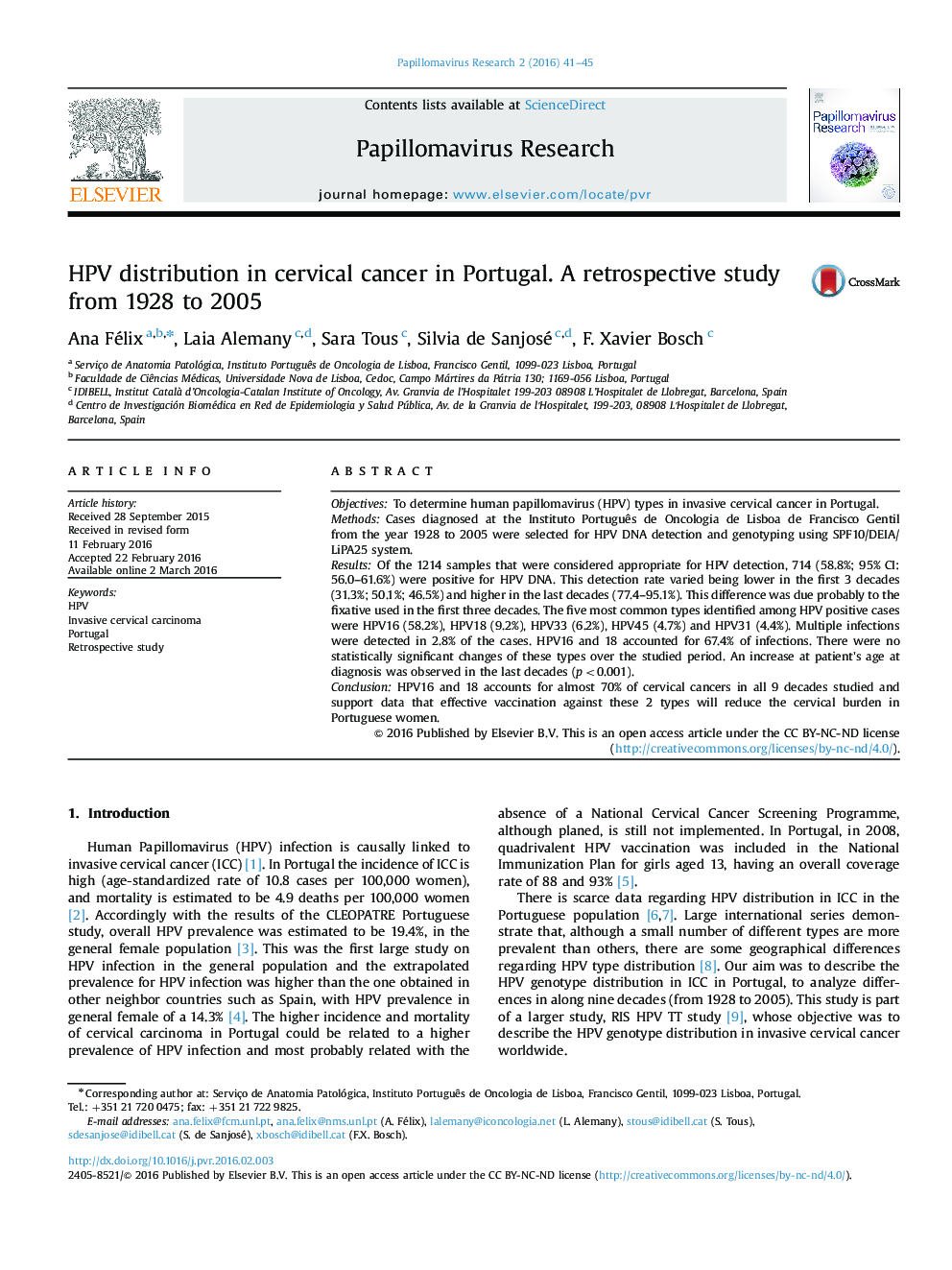| Article ID | Journal | Published Year | Pages | File Type |
|---|---|---|---|---|
| 4372283 | Papillomavirus Research | 2016 | 5 Pages |
•Wide snapshot of HPV genotype profile of invasive carcinomas of the cervix in a European country.•Characterization of HPV by LiPA25 assay of 882 cases of invasive carcinomas of the cervix diagnosed before 1949.•Maintenance of HPV types associated with invasive carcinomas of the cervix along the XX century.
ObjectivesTo determine human papillomavirus (HPV) types in invasive cervical cancer in Portugal.MethodsCases diagnosed at the Instituto Português de Oncologia de Lisboa de Francisco Gentil from the year 1928 to 2005 were selected for HPV DNA detection and genotyping using SPF10/DEIA/LiPA25 system.ResultsOf the 1214 samples that were considered appropriate for HPV detection, 714 (58.8%; 95% CI: 56.0–61.6%) were positive for HPV DNA. This detection rate varied being lower in the first 3 decades (31.3%; 50.1%; 46.5%) and higher in the last decades (77.4–95.1%). This difference was due probably to the fixative used in the first three decades. The five most common types identified among HPV positive cases were HPV16 (58.2%), HPV18 (9.2%), HPV33 (6.2%), HPV45 (4.7%) and HPV31 (4.4%). Multiple infections were detected in 2.8% of the cases. HPV16 and 18 accounted for 67.4% of infections. There were no statistically significant changes of these types over the studied period. An increase at patient׳s age at diagnosis was observed in the last decades (p<0.001).ConclusionHPV16 and 18 accounts for almost 70% of cervical cancers in all 9 decades studied and support data that effective vaccination against these 2 types will reduce the cervical burden in Portuguese women.
